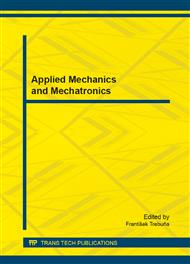p.198
p.208
p.216
p.221
p.227
p.239
p.245
p.252
p.256
Analytical and Numerical Proposal for Designing Plastic Vessels
Abstract:
The article in question concerns the proposal of a pressure vessel for a water heater made of plastic materials. At present, new materials and technologies are coming to the fore where the product price, above all, plays an important role, taking into account the relevant physical and strength properties. The pressure vessels of larger volume (more than 10 litres) water heaters are only manufactured using steel materials under European Union conditions. The proposal considers the use of an alternative material, namely plastic. By optimising the proposal – by the use of plastic materials – it would be possible to achieve a financial economy, since plastic is a good thermal insulating material and does not require enamelling or the use of a cathode protection. There are plastics available on the market which meet the requirements of heat resistance and have a relatively high tensile strength. One of these proposed materials is Noryl GFN1630V which contains 30 % of glass fibre and was chosen as the optimal material. By making strength calculations in the ANSYS programme, water heater pressure vessels were proposed.
Info:
Periodical:
Pages:
227-238
Citation:
Online since:
August 2014
Authors:
Keywords:
Price:
Сopyright:
© 2014 Trans Tech Publications Ltd. All Rights Reserved
Share:
Citation:


